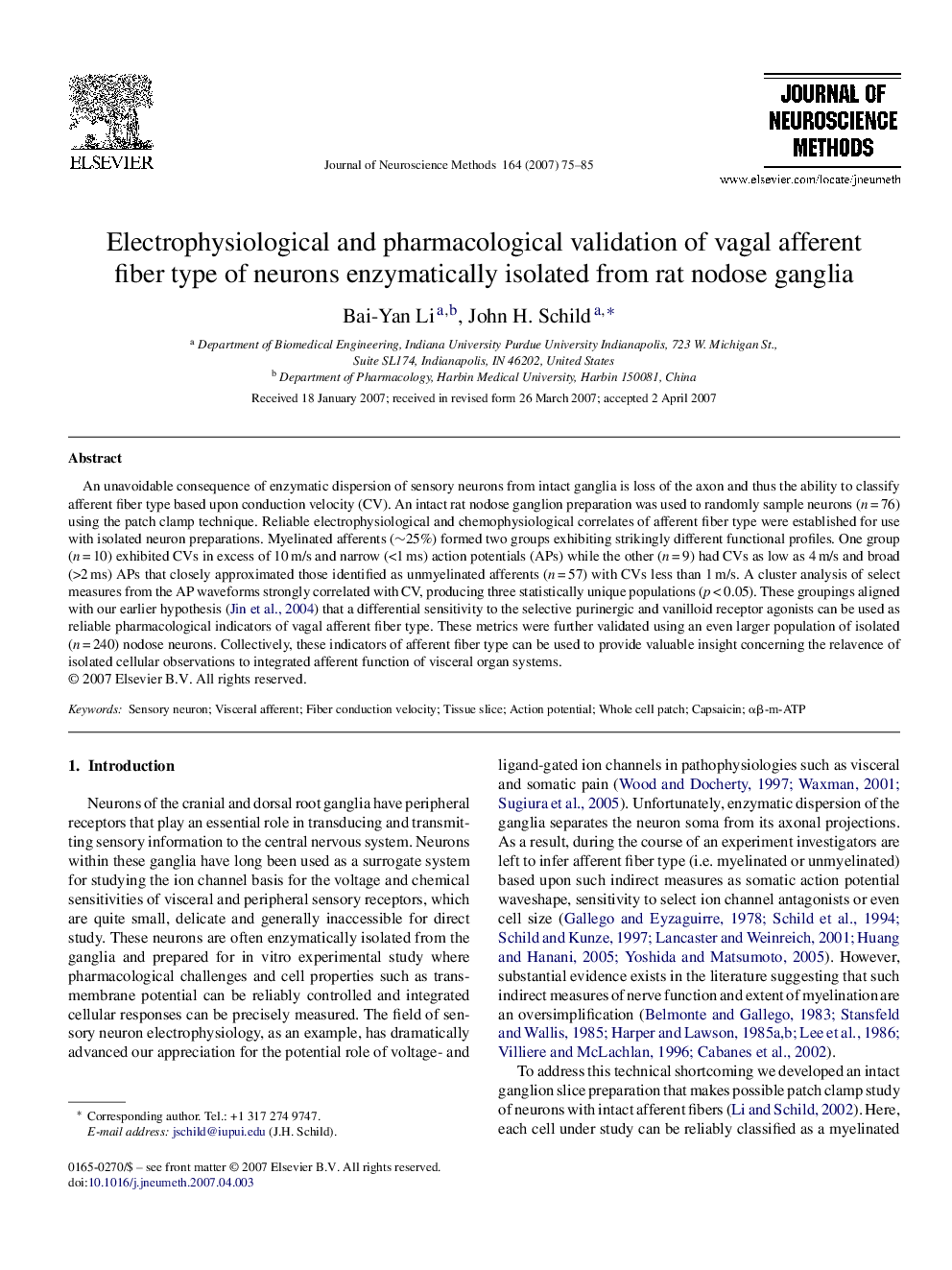| Article ID | Journal | Published Year | Pages | File Type |
|---|---|---|---|---|
| 4336475 | Journal of Neuroscience Methods | 2007 | 11 Pages |
An unavoidable consequence of enzymatic dispersion of sensory neurons from intact ganglia is loss of the axon and thus the ability to classify afferent fiber type based upon conduction velocity (CV). An intact rat nodose ganglion preparation was used to randomly sample neurons (n = 76) using the patch clamp technique. Reliable electrophysiological and chemophysiological correlates of afferent fiber type were established for use with isolated neuron preparations. Myelinated afferents (∼25%) formed two groups exhibiting strikingly different functional profiles. One group (n = 10) exhibited CVs in excess of 10 m/s and narrow (<1 ms) action potentials (APs) while the other (n = 9) had CVs as low as 4 m/s and broad (>2 ms) APs that closely approximated those identified as unmyelinated afferents (n = 57) with CVs less than 1 m/s. A cluster analysis of select measures from the AP waveforms strongly correlated with CV, producing three statistically unique populations (p < 0.05). These groupings aligned with our earlier hypothesis (Jin et al., 2004) that a differential sensitivity to the selective purinergic and vanilloid receptor agonists can be used as reliable pharmacological indicators of vagal afferent fiber type. These metrics were further validated using an even larger population of isolated (n = 240) nodose neurons. Collectively, these indicators of afferent fiber type can be used to provide valuable insight concerning the relavence of isolated cellular observations to integrated afferent function of visceral organ systems.
